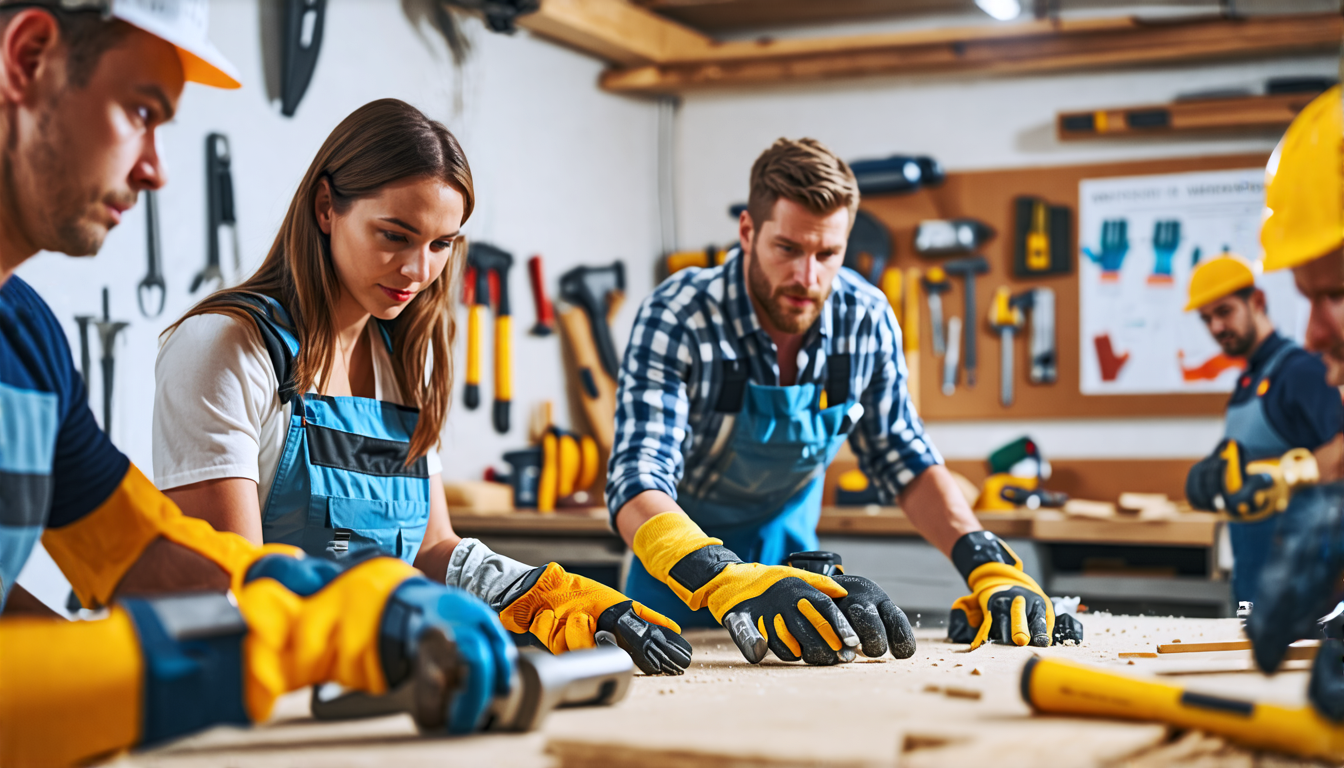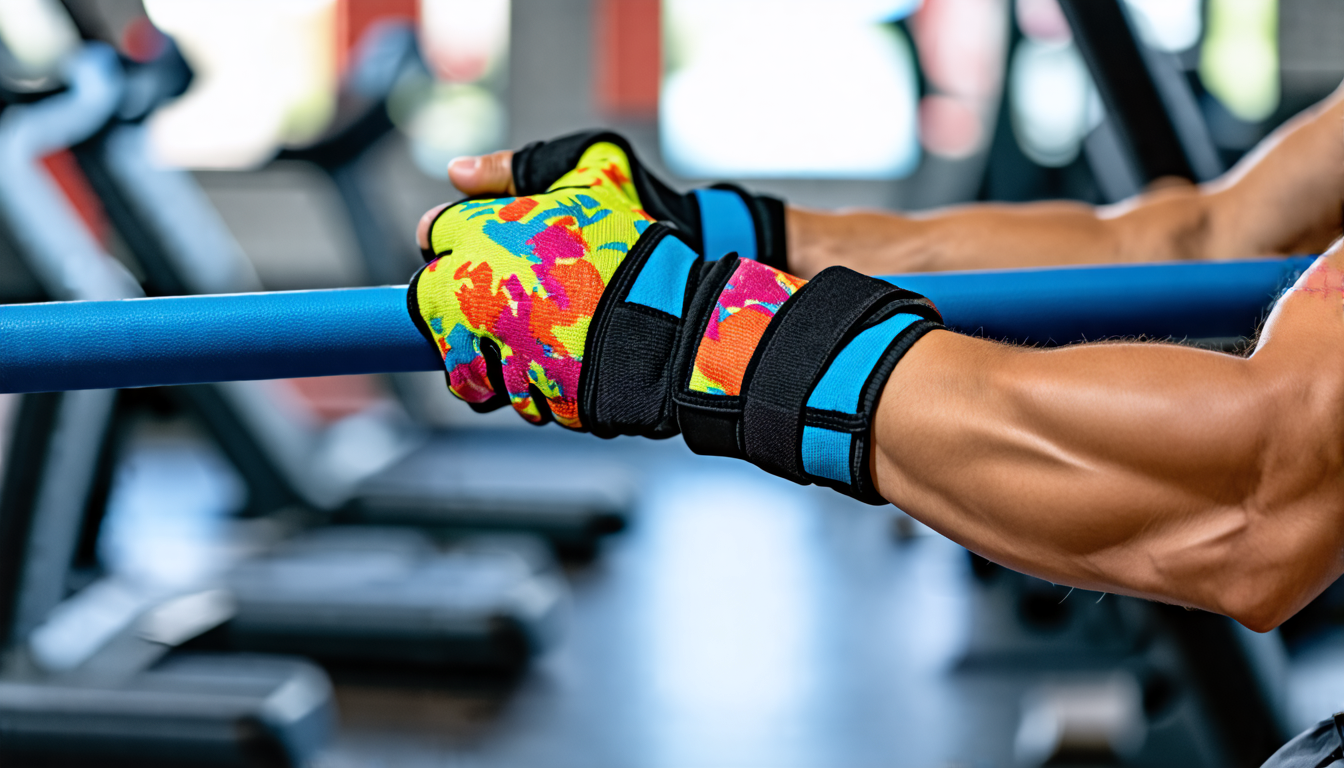In the realm of home fitness, having a well-equipped space often includes essentials like a fitness bar to facilitate a range of strength-building exercises. However, as you embark on your fitness journey, it’s crucial not to overlook the protection of your hands during these workouts. Using a fitness bar can put significant strain on your hands, leading to common ailments such as calluses, blisters, and grip fatigue, which can hinder your progress and motivation. Understanding the significance of hand protection not only helps in preventing these issues but also enhances your overall performance, ensuring a comfortable and secure grip as you lift, pull, or push your way to better health. By focusing on effective hand protection, you contribute to improved grip strength and a more enjoyable workout experience. This article delves into the importance of safeguarding your hands, exploring the best practices and tools available to enhance your safety and performance on the fitness bar at home. Whether you prefer hard and fast routines or gradual and sustained efforts, you’ll find advice here to keep your hands in top form, ensuring that nothing stands between you and achieving your fitness goals.
Understanding the Importance of Hand Protection During Fitness Bar Exercises
Engaging in fitness bar exercises is a fantastic way to build strength, improve endurance, and enhance overall physical fitness. However, this intense form of workout can take a toll on your hands if proper protection is neglected. It’s essential to understand the common hand-related issues that can arise and the importance of hand protection in optimizing your performance and comfort during these exercises.
Potential Injuries and Common Issues from Improper Hand Protection
When you regularly engage with a home fitness bar, the skin on your hands can suffer from repeated friction and pressure. This often leads to the development of calluses, which, while sometimes protective, can become painful and cause discomfort if they grow too large or tear. Without proper hand protection, you might also experience blisters or even skin abrasions. These issues can significantly hinder your workout routine, making it difficult to maintain a reoccurring exercise schedule.
In addition to skin-related problems, grip fatigue is another common issue associated with the use of fitness bars. Grip fatigue occurs when your hands become tired and weak due to repetitive squeezing and holding of a bar. This not only affects your performance but also increases the risk of accidents from losing your grip during a workout. Furthermore, pain from strained hand muscles can discourage regular exercise, impacting your fitness goals.
Benefits of Using Proper Hand Protection
The discomfort and risk of injury associated with improper hand protection highlight the necessity of using suitable methods and accessories designed to safeguard your hands. Here are some of the key benefits:
- Improved Grip Strength: Proper hand gear, such as gloves or grips, can enhance your control over the fitness bar. A secure hold ensures you can perform exercises with higher accuracy and efficiency, which helps in targeting the intended muscle groups more effectively.
- Reduced Pain and Fatigue: By cushioning your palms and fingers, hand protections like padded gloves reduce the pressure exerted on your hands. This can alleviate pain and delay the onset of grip fatigue, allowing you to complete more repetitions or sets.
- Enhanced Comfort: Equipment designed for hand protection often contains moisture-wicking materials that can help maintain a dry grip by absorbing sweat. This feature keeps your hands comfortable during extended workout sessions, preventing slipping and ensuring consistent performance.
- Injury Prevention: Wearing gloves or using grips can protect your hands from developing blisters and calluses. They provide a barrier between your skin and the rough surface of the bar, distributing pressure more evenly and decreasing the likelihood of skin injuries.
By understanding these benefits, individuals who include a fitness bar in their home workout regimen can make informed decisions on how best to protect their hands. Proper hand protection is not just about avoiding discomfort; it is a strategic move to enhance performance and achieve fitness goals more efficiently. It’s not only about shielding your skin but also about ensuring that your workouts are consistently effective and enjoyable.

Best Practices and Tools for Effective Hand Protection
When it comes to using a home fitness bar, hand protection is often overlooked but plays a critical role in maintaining hand health and enhancing workout performance. Whether you’re working on pull-ups, chin-ups, or weightlifting exercises using a fitness bar, your hands can take quite a beating without the proper protection in place. Therefore, understanding the best practices and tools available for hand protection is essential.
Exploring Various Hand Protection Options
Gloves: Gloves are among the most popular hand protection options for fitness enthusiasts. They provide a comfortable layer between your hands and the fitness bar, reducing friction and the chances of developing painful calluses and blisters. When selecting gloves, consider the material, padding, and breathability to keep your hands cool and comfortable during intense workouts.
Grips: Grips are another excellent choice for those looking to protect their hands. They are pieces of padded material that cover the palm and sometimes the fingers, offering direct contact protection while enhancing your grip on the bar. Grips come in various styles, some of which feature wrist straps for added support, making them a versatile choice for many home fitness bar exercises.
Chalk: Chalk is often used to keep hands dry, thereby improving the grip on the fitness bar and reducing the chance of slippage. It is particularly beneficial for exercises that involve a lot of sweat, such as high-repetition pull-ups or deadlifts. However, this might not be the best option for everyone, especially for those who have sensitive skin or are prone to respiratory issues due to chalk dust.
Recommendations for Choosing the Right Hand Protection
When choosing the right hand protection, consider the type of exercises you frequently perform and your personal preferences. For example, if your home fitness routine involves weightlifting with higher weights, padded gloves or grips may offer better protection and comfort. However, if you prefer a more minimal approach and engage in exercises like pull-ups or muscle-ups, chalk might be sufficient to enhance grip and reduce moisture-related slippage.
Additionally, factor in your hand size and the fit of the protection gear. Overly tight gloves or grips can limit circulation and reduce comfort, while loose ones may fail to provide adequate protection. Trying out different options and seeing what feels best during your workout is the key to finding your perfect hand protection.
Practical Tips for Maintaining Hand Health
Keeping your hands in top condition involves more than just choosing the right protection gear. It’s also about proper care routines and strategies to maintain skin health.
Moisturizing Regularly: Keeping your hands moisturized is vital to preventing dry, cracked skin, especially after using chalk or spending long hours gripping a fitness bar. Use a quality hand moisturizer, preferably one that absorbs quickly and doesn’t leave a greasy residue, to ensure your skin stays supple and resilient.
Maintaining Proper Hygiene: Hand hygiene is crucial, especially when using shared fitness equipment. Regularly sanitize your gloves or grips and wash your hands thoroughly post-workout. This practice not only keeps your hands clean but also reduces the risk of infections.
Gradually Increasing Workout Intensity: To naturally build a resilience against calluses, it’s important to gradually increase your workout intensity. Abrupt shifts in activity level can lead to skin damage. Allowing your skin to adapt to new stress levels will promote natural callus formation, which can indeed serve as a protective layer over time without causing discomfort or injury.
By understanding these best practices and exploring the available tools, you can significantly enhance your hand protection strategy when using a home fitness bar, leading to improved workout performance and hand health.
In conclusion, prioritizing hand protection in your fitness routine is essential, particularly when using a home fitness bar. The hands are a critical point of contact during workouts, and neglecting their care can lead to various injuries such as calluses, blisters, and grip fatigue. These issues not only cause discomfort but can also hinder your overall performance by weakening your grip strength and reducing workout efficacy. Proper hand protection, therefore, becomes significant in enhancing workout comfort and optimizing your fitness results.
Incorporating the right tools and practices can make a substantial difference. Options such as gloves, grips, and chalk each offer unique benefits and can be selected based on personal preferences and specific workout routines. For instance, those looking for enhanced grip strength might favor chalk, while individuals seeking more comprehensive hand coverage might opt for gloves. While protection tools are vital, caring for your hands extends beyond what you wear during workouts. Regular moisturizing and adhering to proper hygiene maintain skin health, while safely building natural calluses through gradual intensity increases can fortify your hands against future wear.
Whether your fitness journey involves a commercial gym or the convenient setting of a home fitness bar, these protective practices are crucial. With the proper approach to hand care, you not only ensure longevity in your exercise regimen but also enjoy each session’s maximum benefits, without the discomfort of preventable injuries. In essence, by diligently protecting your hands, you lay a strong foundation for a more effective, enjoyable, and sustainable fitness experience.

